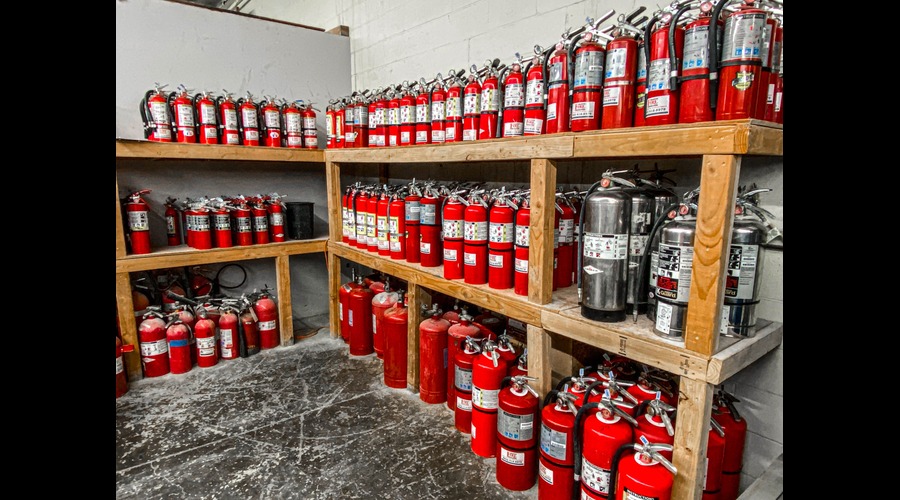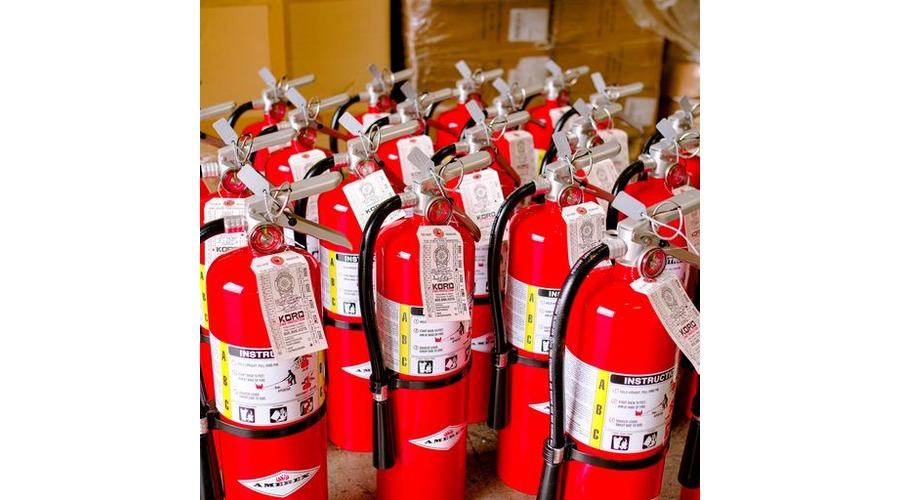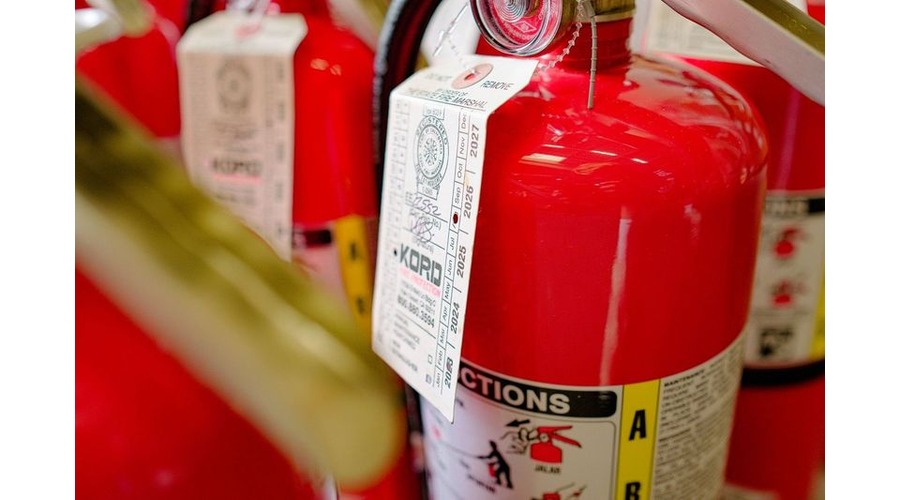Introduction: Fire Extinguisher Maintenance
When it comes to fire safety, having a fire extinguisher
on hand is a crucial step.However, merely owning one is not
enough. Regular maintenance is essential to ensure your fire
extinguisher is ready to protect you and your property when
needed. In this article, we’ll guide you through the yearly
service checks your fire extinguisher should undergo, spanning
from monthly visual inspections to comprehensive 12-year testing.
By the time you finish, you wont be asking “should fire
extinguishers be checked” anymore.
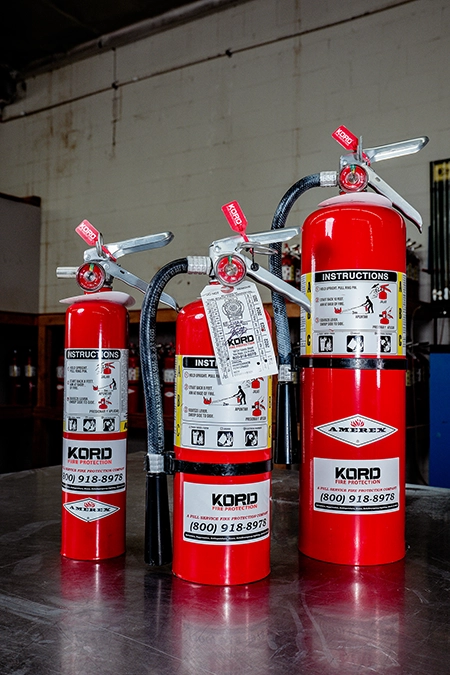

How Often Should fire Extinguishers Be Checked?
Monthly and Annual Checks:
Monthly Visual Inspections: Your fire extinguisher should be visually inspected every month. Team managers or other responsible individuals can perform this check. Ensure that the pressure gauge shows that the extinguisher is in the green zone and that the cylinder is in good condition. If any of these aspects show issues, it’s time to replace the fire extinguisher.
Annual Professional Inspection: While monthly visual inspections are crucial, an annual inspection by a certified and licensed technician is equally important. These professionals possess the expertise to conduct a thorough examination. They will visually inspect the cylinder, confirm its fullness and proper standing, and ensure the status gauge is functioning correctly.
Annual Checks
6-Year Checks
In addition to monthly and annual checks, it’s advisable to have a more in-depth inspection every six years, performed by a licensed technician. During this inspection:
- The technician will check the manufacturing date of the fire extinguisher.
- If the manufacturing date exceeds six years, the technician will advise emptying the extinguisher’s contents.
- Proper disposal should be left to the professionals, as it requires specific handling techniques.
12-Year Checks
If you have a 12-year-old fire extinguisher that hasn’t been tested, the same process applies:
- Contact a trained technician for their services.
- The technician will perform a check on your aging fire extinguisher, following a similar process as with a 6-year-old unit.
- However, there’s a crucial difference: the older extinguisher will undergo hydro-static testing.
Once the contents are disposed of safely, the technician will:
- Inspect the cylinder for any cracks or damage by using soapy water.
- Verify the cylinder’s integrity.
- Refill it with the appropriate extinguishing agent suited for the extinguisher’s purpose.
Moreover, it’s crucial to remember that different fire extinguishers contain various extinguishing agents—ranging from foam and powder to liquid compounds. Always confirm with the technician that the correct components are being used.
Extinguisher Maintenance:
Hydro-static Testing:
In hydro-static testing, we empty the extinguisher’s contents and subject the cylinder to intense pressure (500-600 psi). This pressure, 2.5 times higher than normal use, ensures the cylinder won’t collapse or suffer damage. If the cylinder fails, we promptly recycle it and replace with a new extinguisher.
Other Component Checks:
In addition to cylinder inspections, various other components within the extinguisher must be checked for proper functionality. A certified technician will conduct these checks during each fire extinguisher examination.
These checks aim to guarantee the proper operation of all individual mechanisms, hoses, and other critical components. After a thorough inspection, the technician will reassemble the fire extinguisher, check for leaks using the soapy water technique, and allow it to dry completely before reinstalling it for future use.
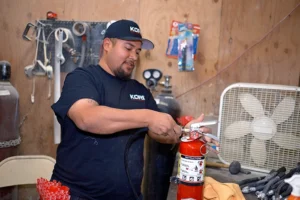

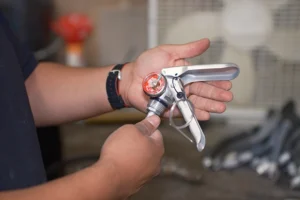

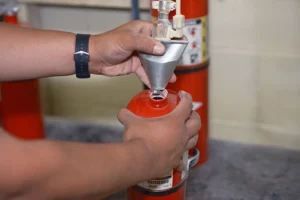

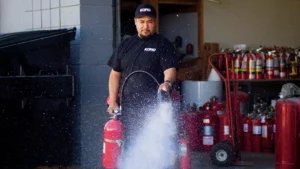

Have you had your Fire Extinguisher Maintenanced yet? Reach out to us!
Conclusion: Regular Fire Extinguisher Maintenance is an indispensable part of fire safety. By following these yearly checks, you can ensure that your fire extinguishers are always ready to provide protection when it matters most.
Reference: https://www.nfpa.org/Public-Education/Staying-safe/Safety-equipment/Fire-extinguishers

